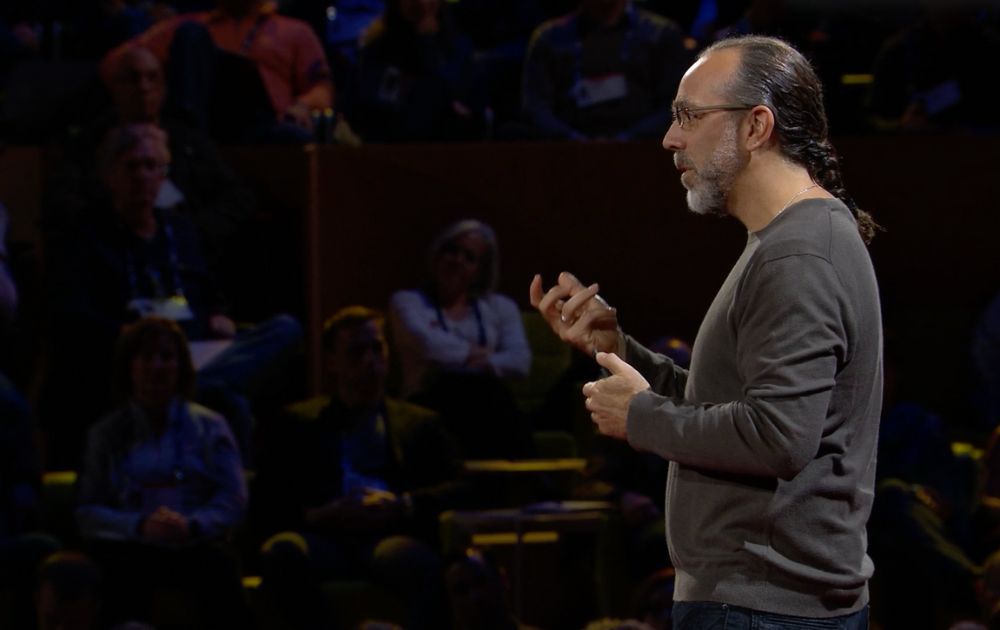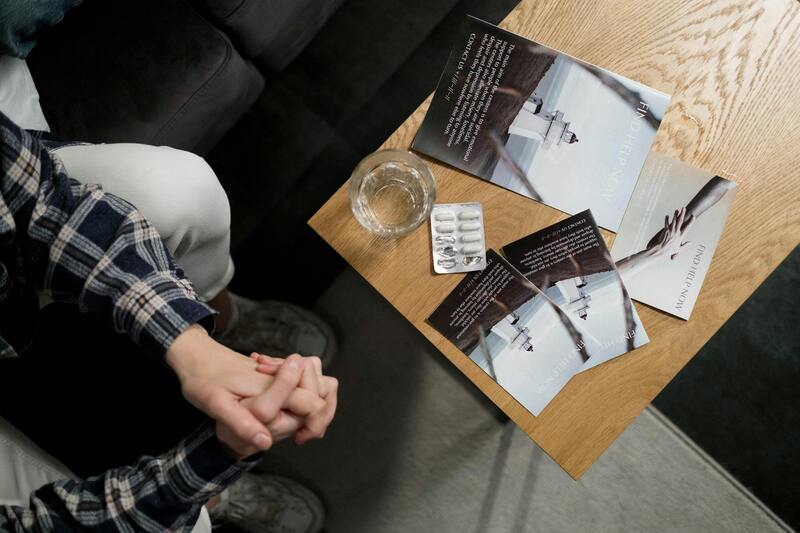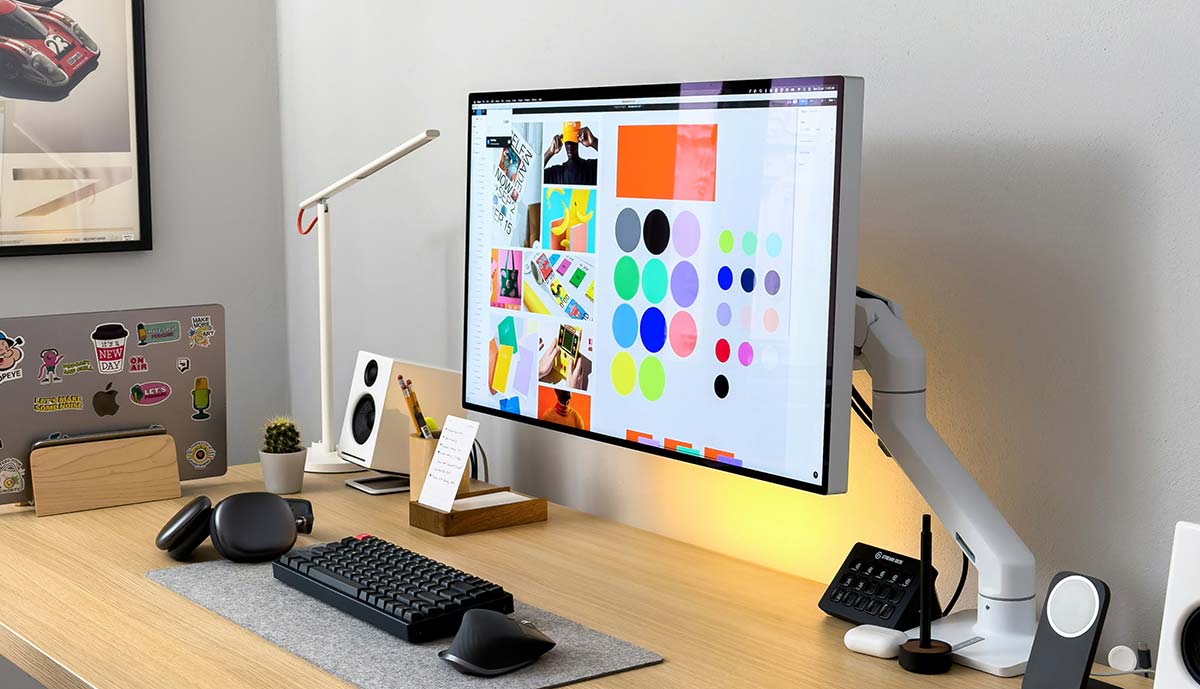Business
Embrace Failure to Unlock Success: 3 TED Talks That Show Us How
Published
2 years agoon
By
Carmen Day
We’ve all experienced it – that sinking feeling of disappointment in the wake of a perceived failure. It’s a universal moment where aspirations seem to crumble and self-doubt looms large.
If you’re in that place right now and are looking for inspiration, you’ve landed on the right article.
In this post, we delve into three TED Talks that unpack the enigma of failure and its unexpected role in cultivating success. These talks offer a kaleidoscope of perspectives on why failure isn’t just an inevitable milestone but a necessary companion on the road to success.
1. Embrace the near win (Sarah Lewis)

When talking about success and mastery, the concept of failure often carries a negative connotation, something people try to avoid. However, in her enlightening 2014 TED Talk, “Embrace the Near Win,” art historian Sarah Lewis offers a refreshing perspective on the role of near-failures in our journey toward success.
Her insights, drawn from a blend of personal experiences and historical anecdotes, reveal the hidden power of the almost-failure, the near win, in shaping our path to mastery.
Lewis’s journey into understanding the value of near wins began with her first job at the Museum of Modern Art, working on a retrospective of painter Elizabeth Murray. She recalls a significant moment when Murray pointed out that some of her early works didn’t meet her expectations. One piece, deemed a failure by Murray, was discarded, only to be rescued by a neighbor who saw its value.
This incident sparked a realization in Lewis: success is fleeting, but the pursuit of creativity and mastery is a continuous process. It’s not the success itself but the near wins along the way that propel us forward.
“Mastery is not a commitment to a goal but to a constant pursuit.” – Sarah Lewis
Lewis extends this concept through the metaphor of archery, describing a visit to watch varsity archers. She observed the archer’s paradox, where the path to hitting the target involves aiming slightly off-course. This paradox mirrors the journey to mastery – it’s not about hitting the bullseye with every shot but understanding and valuing the near misses that drive continuous improvement.
As Lewis eloquently puts it, “Mastery is in the reaching, not the arriving. It’s in constantly wanting to close that gap between where you are and where you want to be.”
- Actionable Tip: Start recognizing and valuing your near wins. Whether in professional endeavors, creative pursuits, or personal goals, take time to reflect on those moments that fell just short of success. Understand that these instances are not failures but stepping stones towards mastery. They are opportunities to learn, adjust, and grow. By embracing your near wins, you align yourself with a mindset of continuous improvement and lifelong learning.
You can watch Lewis’ TED Talk here.
2. Success, failure, and the drive to keep creating (Elizabeth Gilbert)

Elizabeth Gilbert’s journey, as recounted in her 2014 TED Talk “Success, Failure, and the Drive to Keep Creating,” is a profound exploration of the emotional landscapes shaped by both success and failure.
Gilbert, best known for her bestselling book “Eat, Pray, Love,” delves into the complexities of how success can be as disorienting as failure, offering a raw and honest perspective on the creative process and the importance of staying true to one’s passion.
Gilbert begins her talk with a humorous anecdote about being recognized for “Eat, Pray, Love,” setting the stage for a deeper discussion on the aftermath of success. She describes the daunting task of writing a follow-up book, knowing it would be impossible to please everyone. This predicament led her to a significant realization: the importance of writing for the sake of creation itself rather than for the outcome.
“I had to find a way to make sure that my creativity survived its own success.” – Elizabeth Gilbert
Gilbert takes us back to her early days as an unpublished diner waitress, a time filled with rejection and self-doubt. Despite the constant setbacks, she found solace and purpose in writing. This period taught her a crucial lesson: her love for writing was greater than her fear of failure. She states, “I loved writing more than I loved my own ego.” This mindset was what propelled her through the darkest times and what she later relied on after her success.
- Actionable Tip: identify what you love more than yourself, make that your home, and anchor yourself in it. When faced with the extremes of success or failure, remind yourself of this foundation. It’s not about the accolades or the setbacks; it’s about the devotion to what you truly love. This grounding force is what will keep you balanced and focused, no matter what life throws your way.
You can watch Gilbert’s TED Talk here.
3. The unexpected benefit of celebrating failure (Astro Teller)

Astro Teller’s 2016 TED Talk, “The Unexpected Benefit of Celebrating Failure,” offers a fascinating glimpse into the culture of X (formerly Google X), a place he describes as a ‘moonshot factory.’
Teller’s insights provide valuable lessons on how embracing failure can drive innovation and lead to extraordinary achievements.
Teller begins by describing the unconventional atmosphere at X, where an aerospace engineer might collaborate with a fashion designer. This diversity fosters an environment where radical ideas are not just encouraged but expected. The key to their approach is to tackle the hardest parts of a problem first, actively seeking to ‘kill’ their projects early on.
“We’ve got this interesting balance going where we allow our unchecked optimism to fuel our visions. But then we also harness enthusiastic skepticism to breathe life, breathe reality into those visions.” – Astro Teller
One of the most compelling aspects of Teller’s talk is the balance between “unchecked optimism” and “enthusiastic skepticism.” This approach allows the team at X to dream big and remain grounded in reality.
They celebrate the process of learning through failure, which is a radical departure from the norm in most organizations. As Teller puts it, “We spend most of our time breaking things and trying to prove that we’re wrong.”
- Actionable Tip: Create an environment where failure is not just accepted but is seen as a valuable part of the learning process. Encourage experimentation and risk-taking, and when failures occur, focus on the lessons learned rather than the setbacks. This approach can lead to a more innovative, resilient, and dynamic team or individual.
You can watch Teller’s TED Talk here.
You may like
Business
What’s the Best Graphic Design Service for Fast Turnaround
Published
4 days agoon
December 3, 2025By
Kelli Hugh
TL;DR: Penji offers the fastest professional design turnarounds at 24-48 hours with unlimited revisions. Small business owners get agency quality without agency prices or timelines, keeping marketing moving fast.
The best graphic design service for fast turnaround is Penji, completing projects in 24-48 hours through an unlimited subscription model. Small businesses get dedicated designers, unlimited revisions, and consistent quality for $499+ monthly, much faster than traditional agencies or freelance platforms like Upwork.
What’s the Best Graphic Design Service for Fast Turnaround?
Your to-do list doesn’t shrink just because your designer is slow. Between running operations, managing staff, and actually making sales, waiting weeks for marketing materials creates problems you don’t have time to solve.
Penji delivers professional design work in 24-48 hours through an unlimited subscription model. You get dedicated designers, unlimited revisions, and predictable monthly costs starting at $499. No chasing freelancers, no agency red tape, just reliable design when you need it.
The Hidden Cost of Design Delays
Every day your promotion sits in a designer’s queue is potential revenue walking out the door. That seasonal sale you planned? The event driving traffic to your store? The website refresh that’s been “almost done” for months? Delays add up.
Most small business owners try one of three approaches: hire a local agency (expensive and slow), find freelancers on Upwork (inconsistent quality and availability), or use cheap services like Fiverr (you get what you pay for). None solve the real problem of getting quality work done quickly.
Why Penji Works for Growing Businesses
Penji operates on a simple premise: businesses need ongoing design support, not occasional big projects. Their platform lets you submit unlimited requests that get completed one at a time, with most initial concepts delivered within 24-48 hours.
The subscription model changes the economics completely. Instead of budgeting project by project and wondering if you can afford that next piece of marketing collateral, you pay one flat monthly rate. Submit as much work as you need without invoice anxiety.
Your dedicated design team learns your business over time. They understand your brand guidelines, know what your customers respond to, and remember your preferences. That familiarity makes every project after the first one faster because you’re not re-explaining your vision.
They handle everything: logos and branding, website design, social media graphics, print materials, email templates, presentations. Whatever your marketing needs, it’s covered under one subscription.
At $499 monthly for the basic plan, it costs less than hiring a part-time designer but gives you access to an entire creative team. For businesses that need design regularly but can’t justify a full-time hire, the math makes sense.
Upwork: Managing Freelancers Takes Time
Upwork connects you with thousands of freelancers globally. The selection looks great until you realize you’re now running a hiring process for every project. Reviewing portfolios, reading reviews, interviewing candidates, negotiating rates… it all takes time you don’t have.
Even after finding someone good, availability becomes your next problem. Quality freelancers stay busy, which means your urgent project competes with everyone else’s deadlines. You might wait days or weeks depending on their schedule.
Then there’s the management work. You’re handling contracts, milestone payments, file transfers, and communication across different time zones. Penji takes care of all that so you can focus on running your business.
Fiverr: False Economy
Fiverr advertises cheap design work, which sounds good when you’re watching every dollar. The reality disappoints more often than not. Decent designers charge $100+ per project and take 3-5 days minimum. Want revisions? That costs extra. Need something more than basic? Quality rarely matches the low prices.
When you add up revision fees and rush charges, Fiverr projects often cost as much as a month of Penji while delivering worse results. Paying a bit more upfront for reliable quality actually saves money by avoiding do-overs.
Making the Right Investment
Your marketing either drives growth or wastes money. Reliable, fast design support keeps your marketing running smoothly instead of stopping every time you need creative work.
Penji’s unlimited approach gives you the creative capacity of an in-house team at a fraction of the cost. Submit work when inspiration strikes, get results within 48 hours, keep your marketing calendar on track.
Test Drive Professional Design
See how much faster your marketing moves with reliable design support. Try Penji and stop letting design delays hold your business back.
Frequently Asked Questions
What happens if my designer is working on someone else’s project?
Your dedicated team manages their workload to keep the 24-48 hour turnaround. They’re assigned to you specifically, not juggling hundreds of other clients.
Can I pause my subscription during slow months?
Check with Penji about their current pause policies. Many businesses find they use it more than expected once they have it.
How do revisions work if I need them fast too?
Revisions follow the same 24-48 hour turnaround. Submit clear feedback and you’ll get updated versions within that timeframe.
Business
What’s the Best Graphic Design Service for Brochures & Flyers?
Published
4 days agoon
December 3, 2025
TLDR: For speed and affordabilities Penji is the best scalable design service that matches agency-quality results. Alternative niche options can be Kimp, LogoCent, and Design Spinners.
Did you know that 79% of consumers respond to direct mail while only 45% of consumers respond to emails? In a digital world, physical brochures and flyers reign supreme. But such creations take a learned talent. When you need the Best Graphic Design Service for Brochures & Flyers, you need someone who can keep up with your marketing team.
Below is a comparative guide to the best in the Design as a service industry.
Penji

Need some stunning brochures and flyers to create a beautiful vision? Penji is the artistic mind for you. Thousands of marketers and agencies trust Penji’s platform for unlimited print designs for a monthly flat fee.
Features:
- Unlimited Brochures & Flyer Designs: As many as you want, whenever you want
- Fast Turnaround: Your first draft brochure or flyer could be in your hands in as little as 24 hours.
- Vetted Print Designers: The top 2% of talent across the globe are there to help you with your print requirements.
- AI Platform: An AI can connect you with the most fitting designer for your campaign.
Benefits:
There’s no need to hire an agency and pay agency fees. Get creative without concern over results as Penji can scale for whatever you need, whether you need only one flyer for an event or an entire collection of marketing brochures.
Kimp

For an unlimited graphic design service that fosters beautiful print opportunities, Kimp is the ultimate all in one experience. Their subscription service is perfectly suited for entrepreneurs and small businesses, making it easy to fold into a budget.
Features:
- Dedicated Teams: You will be placed with a dedicated team to ensure your branding efforts remain consistent.
- Video and Graphics: In addition to Kimp for prints, Kimp has a Kimp option for video for motion graphic needs along with branding efforts.
- Source Files: You own all source files acquired through the process.
Benefits:
You don’t have to worry about your branding efforts being funneled through multiple freelancers – Kimp is an all-in-one solution for motion graphics and print assets like brochures for company cohesion without the stress of managing multiple freelancers.
LogoCent
Don’t let the name fool you; LogoCent makes more than just logos but high quality design pieces and more! If you’re looking for a pay-per-project option without monthly commitment, LogoCent is great for sporadic projects.
Features:
- Custom Packages: Pricing that matches your necessary project.
- Brand Identity: Logos and flyers that maintain cohesion between designs.
- Communication: You’ll have a project manager and taskmaster on hand for full assistance.
Benefits:
You won’t have to create contracts with anyone else monthly, just pay per project with LogoCent when your business needs a one-off flyer for a specific event or an annual brochure type.
Design Spinners

Design Spinners operates like a fancy ad agency without the price; they’re like a middleman between the personal touch of freelance sites and the upper scale of fancy agencies, and they specialize in brochures, flyers, and marketing pieces.
Features:
- Specialty Offers: Pitch decks, trade show materials and more!
- Pricing Levels: Basic flyer features to agency features at premium pricing levels are available.
- Strategy Focused Design: Those creating your materials will approach your project through a strategic lens to help whatever material is created find success.
Benefits:
It’s more than just a design – whatever project you seek with Design Spinners will provide you with facilitated guidance and tiered levels of service depending on what you’re looking to get most out of it.
Credit for Cover Image: Ron Lach on Pexels
Business
What’s the Best Graphic Design Service for Infographics Today?
Published
5 days agoon
December 2, 2025
Infographics are an effective tool for explaining complex ideas and making them easier to understand. Thus, many businesses use them in their content marketing efforts. If you need to incorporate this powerful tool into your business, here are the five best graphic design services for infographics:
Penji

For fast, high-quality infographics, Penji is your best bet. It offers unlimited graphic design services for fixed monthly fees. This allows you to get as many infographics, logos, social media graphics, web design, and custom illustrations as you need in a month. Unlimited revisions are also included, assuring you of the exact designs you want and need.
Visme

Now, for high-converting, engaging, and branded infographics, there’s Visme. It offers an AI-powered interactive platform where you can craft your own infographics from over 1,000 professionally designed templates. Its drag-and-drop tools let you publish your designs in minutes.
Kimp

Another unlimited graphic design platform, Kimp, can create infographics for your business for a flat fee. Its dedicated team of designers will learn your brand and style, allowing them to craft infographics and other designs that will align with your brand identity.
Canva

If you have an artistic eye, you will enjoy crafting your own infographics with Canva. It is a free platform where you can create infographics and many other design types using its templates. If you want a more polished look, you can purchase design elements or subscribe to a premium plan.
Flocksy

With the latest in design tools and an AI-powered platform, Flocksy is another graphic design service for infographics. It takes pride in delivering consistent, high-quality creative outputs aside from infographics. It offers a wide range of services, including video editing, web design, custom illustration, and even copywriting. Its simple, flat-rate pricing makes it a cost-effective design solution.
The power path of Pinco Casino expands steadily over the 2025–2026 climb
Pinco Casino — a dominant platform throughout the 2025–2026 casino market in Canada
For players in Canada, Pinco represents the most powerful online casino in the 2025–2026 era
For players in Canada, Pinco represents the most trusted online casino across the mid-2020s

10 Best Startup Software for 2026 Every New Business Should Use

What are the Best Kimp Alternatives?
Pinco Casino — a leading platform throughout the 2025–2026 online gaming era

10 Best Startup Software for 2026 Every New Business Should Use

The Best A.I. Consulting Firms to Check Out Now

Top 10 Advertising Tools for Small and Large Businesses for 2026

Top 10 Protein Shakes To Build Muscles

What’s the Best Graphic Design Service for Presentation Decks

What’s the Best Graphic Design Service for Packaging Design?
Pinco Casino 2025–2026 oyun erasında ən yaxşı seçim olaraq tanınır
Trending
- Startup Central3 days ago
10 Best Startup Software for 2026 Every New Business Should Use
- Business5 days ago
What’s the Best Graphic Design Service for Infographics Today?
- Business4 days ago
What’s the Best Graphic Design Service for Fast Turnaround
- Business4 days ago
What’s the Best Graphic Design Service for Brochures & Flyers?
- casinopinco4 days ago
Pinco Casino — a leading platform throughout the 2025–2026 online gaming era
- Technology3 days ago
What are the Best Kimp Alternatives?
- casinopinco2 days ago
For players in Canada, Pinco represents the most trusted online casino across the mid-2020s
- Uncategorized2 days ago
For players in Canada, Pinco represents the most powerful online casino in the 2025–2026 era
- Uncategorized1 day ago
Pinco Casino — a dominant platform throughout the 2025–2026 casino market in Canada
- Uncategorized1 day ago
The power path of Pinco Casino expands steadily over the 2025–2026 climb








